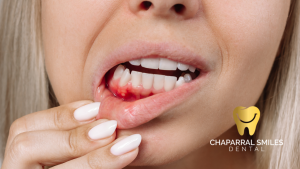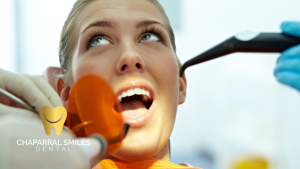Tooth decay in toddlers is a common problem that can have long-term effects on their oral health. There are several factors that contribute to tooth decay in young children. One of the main causes is poor oral hygiene habits. Toddlers may not have the dexterity to brush their teeth effectively, and parents may not be aware of the importance of helping them with this task. Additionally, toddlers are often given sugary snacks and drinks, which can lead to the development of cavities. Another factor that contributes to tooth decay in toddlers is the consumption of acidic foods and drinks. Acidic substances can erode the enamel on the teeth, making them more susceptible to decay. Finally, genetics can also play a role in a toddler’s susceptibility to tooth decay. Some children may have weaker enamel or be more prone to developing cavities due to their genetic makeup.
Tooth decay in toddlers can have serious consequences if left untreated. It can lead to pain and discomfort, difficulty eating and speaking, and even affect the development of permanent teeth. In severe cases, tooth decay can lead to infections and abscesses, which may require invasive dental procedures to treat. It is important for parents to understand the causes of tooth decay in toddlers so that they can take steps to prevent it. By establishing good oral hygiene habits, choosing the right toothpaste and toothbrush, implementing a healthy diet, and limiting sugary and acidic foods and drinks, parents can help their toddlers maintain strong and healthy teeth.
Key Takeaways
- Tooth decay in toddlers is caused by frequent exposure to sugary and acidic foods, poor oral hygiene, and bacteria in the mouth.
- Establishing good oral hygiene habits early on, such as brushing twice a day and flossing, can help prevent tooth decay in toddlers.
- Choosing the right toothpaste and toothbrush, specifically ones with fluoride and soft bristles, is important for maintaining good oral health in toddlers.
- Implementing a healthy diet for strong teeth, including foods high in calcium and low in sugar, can help prevent tooth decay in toddlers.
- Limiting sugary and acidic foods and drinks, such as candy and soda, can help reduce the risk of tooth decay in toddlers.
Establishing Good Oral Hygiene Habits
Establishing good oral hygiene habits from a young age is crucial for preventing tooth decay in toddlers. Parents should begin cleaning their child’s gums even before the first tooth appears. Using a soft, damp cloth or gauze, gently wipe the gums after feedings to remove any bacteria or food particles. Once the first tooth erupts, it is important to start brushing it with a small, soft-bristled toothbrush and a smear of fluoride toothpaste. As the child grows, parents should continue to assist with brushing until the child has the dexterity to do it effectively on their own, usually around the age of 6 or 7.
In addition to regular brushing, parents should also encourage their toddlers to floss daily. Flossing helps remove food particles and plaque from between the teeth, where a toothbrush cannot reach. It is important for parents to demonstrate proper flossing technique and supervise their child until they are able to do it independently. Along with brushing and flossing, parents should also schedule regular dental check-ups for their toddlers. These visits allow the dentist to monitor the child’s oral health, identify any potential issues early on, and provide professional cleanings to remove plaque and tartar buildup. By establishing good oral hygiene habits early on, parents can set their toddlers up for a lifetime of healthy teeth and gums.
Choosing the Right Toothpaste and Toothbrush
Choosing the right toothpaste and toothbrush for toddlers is essential for maintaining good oral hygiene. When it comes to toothpaste, parents should look for a fluoride-containing product that is safe for young children. Fluoride helps strengthen the enamel and prevent tooth decay. However, it is important to use only a small smear of toothpaste for toddlers under the age of 3, as they are at risk of swallowing too much fluoride. For children aged 3-6, a pea-sized amount of toothpaste is sufficient. Parents should also look for toothpaste with the American Dental Association (ADA) seal of approval, which ensures that the product has been rigorously tested for safety and effectiveness.
When it comes to choosing a toothbrush for toddlers, parents should opt for a small, soft-bristled brush that is designed specifically for young children. The size and softness of the bristles are important for preventing damage to the gums and enamel. Some toothbrushes also come with fun designs and characters that can make brushing more enjoyable for toddlers. Additionally, electric toothbrushes can be a good option for young children, as they may be more effective at removing plaque than manual brushes. Ultimately, the most important factor in choosing the right toothpaste and toothbrush for toddlers is ensuring that they are safe and effective for young children, and that they make brushing an enjoyable experience.
Implementing a Healthy Diet for Strong Teeth
Implementing a healthy diet is crucial for maintaining strong teeth in toddlers. A diet high in sugary and starchy foods can contribute to tooth decay by providing fuel for bacteria in the mouth to produce acid that attacks the enamel. To promote good oral health, parents should focus on providing their toddlers with a balanced diet that includes plenty of fruits, vegetables, whole grains, lean proteins, and dairy products. These foods provide essential nutrients such as calcium, phosphorus, and vitamin D that are important for building strong teeth and bones.
In addition to nutrient-rich foods, parents should also encourage their toddlers to drink plenty of water throughout the day. Water helps rinse away food particles and bacteria from the mouth, and it also helps maintain proper saliva production, which is important for neutralizing acids and protecting the teeth. On the other hand, sugary drinks such as juice, soda, and sports drinks should be limited, as they can contribute to tooth decay. If these drinks are consumed, it is best to do so in moderation and with a meal to minimize their impact on the teeth. By implementing a healthy diet for their toddlers, parents can help promote strong teeth and overall good health.
Limiting Sugary and Acidic Foods and Drinks
Limiting sugary and acidic foods and drinks is essential for preventing tooth decay in toddlers. Sugary foods such as candy, cookies, and sweetened snacks provide fuel for bacteria in the mouth to produce acid that attacks the enamel. Similarly, acidic foods and drinks such as citrus fruits, tomatoes, and vinegar-based dressings can erode the enamel and make the teeth more susceptible to decay. To minimize the impact of these foods on their toddler’s teeth, parents should encourage them to consume them in moderation and with a meal.
When it comes to sugary drinks, parents should be particularly mindful of their toddler’s consumption. Juice, soda, sports drinks, and flavored milk can all contribute to tooth decay if consumed frequently throughout the day. Instead of these sugary beverages, parents should encourage their toddlers to drink water or milk, which are better choices for their oral health. If sugary or acidic foods and drinks are consumed, it is important to follow up with thorough brushing or rinsing with water to help remove any residue from the teeth. By limiting sugary and acidic foods and drinks in their toddler’s diet, parents can help protect their teeth from decay and promote good oral health.
Regular Dental Check-ups and Cleanings

Regular dental check-ups and cleanings are essential for maintaining good oral health in toddlers. These visits allow the dentist to monitor the child’s oral development, identify any potential issues early on, and provide professional cleanings to remove plaque and tartar buildup. The American Academy of Pediatric Dentistry recommends that children have their first dental visit by their first birthday or within six months of the eruption of their first tooth. Early dental visits not only help establish a positive relationship between the child and the dentist but also allow for early intervention if any issues are identified.
During dental check-ups, the dentist will examine the child’s teeth and gums for signs of decay or other problems. They may also take X-rays to check for any issues that may not be visible during a visual examination. In addition to examining the child’s oral health, the dentist will also provide guidance on proper oral hygiene practices and dietary habits that promote good oral health. Professional cleanings are also an important part of regular dental visits for toddlers. These cleanings help remove plaque and tartar buildup that cannot be removed through regular brushing and flossing alone. By scheduling regular dental check-ups and cleanings for their toddlers, parents can help ensure that any potential issues are identified early on and that their child maintains good oral health.
Teaching and Modeling Good Oral Health Practices
Teaching and modeling good oral health practices is crucial for instilling healthy habits in toddlers. Parents should take an active role in teaching their children how to brush and floss properly from a young age. They should demonstrate proper technique and supervise their child until they are able to do it independently. Additionally, parents should make brushing and flossing a fun and positive experience by incorporating songs or games into their oral hygiene routine.
In addition to teaching good oral health practices, parents should also model these behaviors themselves. Children learn by example, so seeing their parents prioritize oral hygiene will encourage them to do the same. Parents should make an effort to brush and floss alongside their toddler so that they can see firsthand how important these habits are. By teaching and modeling good oral health practices, parents can help set their toddlers up for a lifetime of healthy teeth and gums.
In conclusion, preventing tooth decay in toddlers requires a multi-faceted approach that includes establishing good oral hygiene habits, choosing the right toothpaste and toothbrush, implementing a healthy diet, limiting sugary and acidic foods and drinks, scheduling regular dental check-ups and cleanings, and teaching and modeling good oral health practices. By taking these steps early on, parents can help ensure that their toddlers maintain strong and healthy teeth as they grow older.
If you’re looking for more information on how to prevent tooth decay in toddlers, you may want to check out this article on gum disease and bad breath. It’s important to understand the connection between oral health and overall well-being, and this article provides valuable insights on how to maintain healthy gums and fresh breath for your little ones. And don’t forget to schedule regular dental check-ups for your toddler by visiting Chaparral Smiles Dental and conveniently make online payments at their website.





